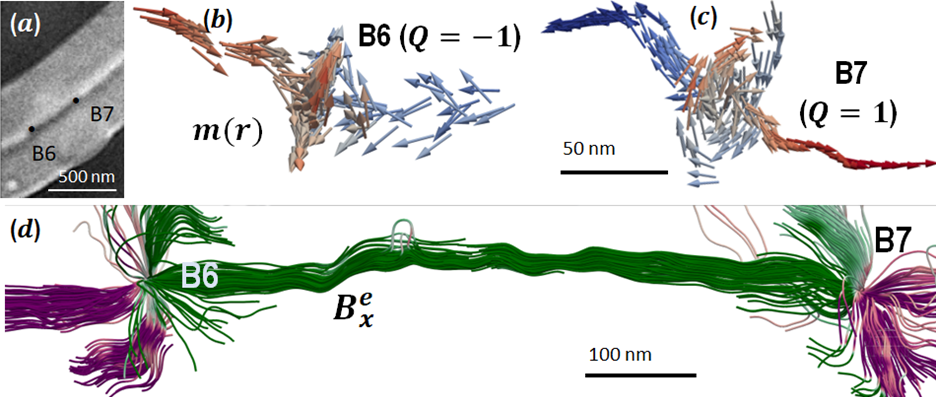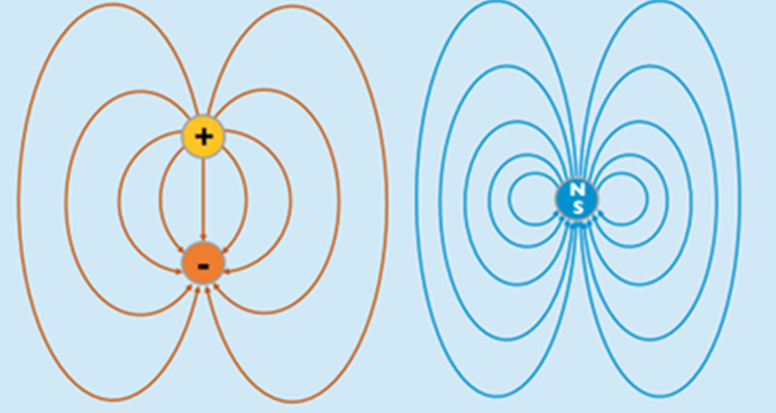
A scientific collaboration between scientists from Universidad de Oviedo and ALBA Synchrotron has achieved a detailed description of magnetic singularities and their interactions from the analysis of data acquired at MISTRAL beamline with the magnetic vector tomography technique. The results of the study, fully experimental not involving simulations and published at Communications Physics, provide a solid ground to understand fundamental knowledge about these singularities, what may have future applications on the design of magnetic devices.
A non-saturated ferromagnetic material exhibits a non-uniform magnetization, forming a mosaic of magnetic domains with different magnetizations. The separation between these domains, domain walls, often intersect which results in exotic magnetization distributions called magnetic singularities. A particular type of magnetic singularities, Bloch points, are the focus of the study performed by researchers from Oviedo University and ALBA Synchrotron, and can be visualized in figure panels b and c.
The work, published at Communications Physics, described how the magnetization behaves around these Bloch points. At their location, the magnetization vectors cancel one another since they point oppositely (-> <- or <- ->), but around them they form complex patterns as the ones shown in figure at panels b and c, with vortex distribution.
A further description of the Bloch singularities is based on analogies with classical electrostatics. The converging and diverging magnetizations remind the electric fields of negative and positive point charges and lead to the concept of emergent magnetic field that, in complete analogy to electric field and electrical charge, allows to define a magnetic charge Q. Within this vision, Bloch points are described as magnetic monopoles of topological magnetic charges Q that create the emergent field Be.
The continuous lines in panel d are the emergent magnetic field lines obtained directly from the experimentally determined magnetization. B6 and B7 are two monopoles with opposite charges forming a topological dipole with field lines connecting both charges. The researchers identified single isolated monopoles and dipoles in various parts of the sample. It remains to determine and understand the differences among monopoles and dipoles in what refers to magnetic transport.
The measurements were taken using the X-ray vector magnetic tomography technique at MISTRAL beamline at ALBA using circularly polarized synchrotron light. The research allowed to describe how the magnetization is arranged around a Bloch point and to identify magnetic dipoles formed by pairs of opposite topological charges. This knowledge may have future potential applications in the field of magnetic devices such as storage memories and RAM memories.



